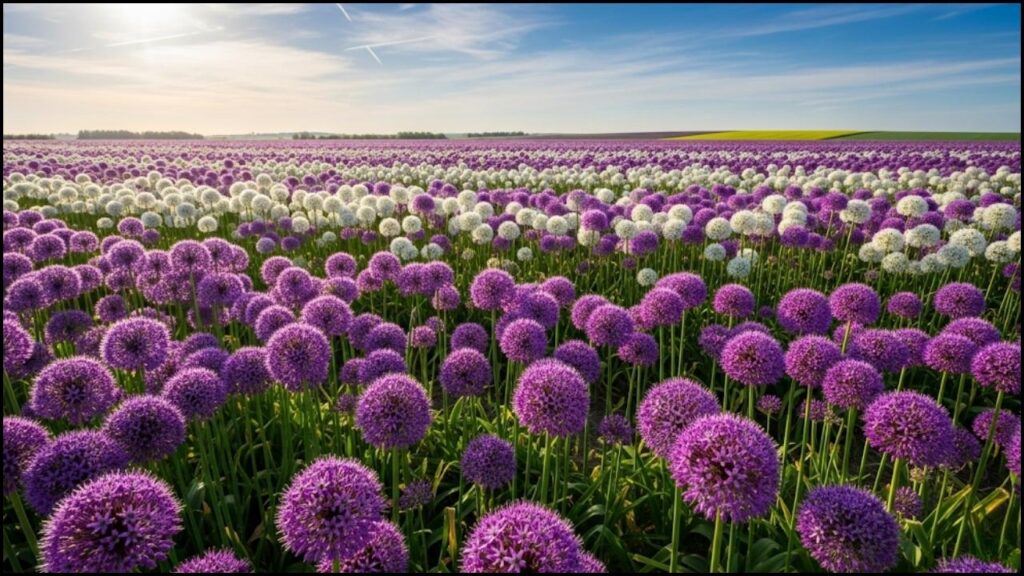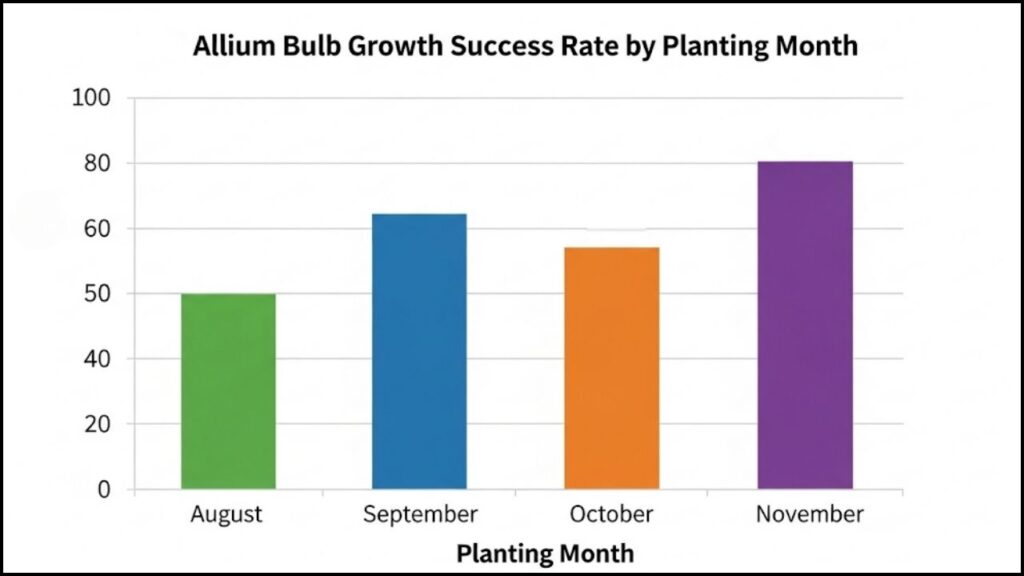The window for planting allium bulbs is fast approaching for gardeners in the Northern Hemisphere, with experts urging timely action to ensure a vibrant spring display. The period between late September and November is considered the most opportune time to plant these ornamental bulbs. Planting allium, a genus of flowering plants that includes onions and garlic, in the autumn allows the bulbs to establish a strong root system before the ground freezes. This crucial pre-winter development is essential for producing robust, healthy blooms when temperatures rise again in the spring.

The Critical Timing and Science Behind Allium Planting
Planting allium bulbs in the fall is not merely a recommendation; it is a horticultural necessity driven by the plant’s biological cycle. According to the Royal Horticultural Society (RHS), these bulbs require a period of cold dormancy, known as vernalization, to trigger flowering. This process is naturally provided by the winter season. Without this cold period, the bulbs may not bloom at all or may produce only weak, stunted flowers.
“The cooling period is what signals to the bulb that it’s time to prepare for new growth,” said Dr. Anya Sharma, a senior botanist at the Chicago Botanic Garden. “By planting them in the autumn, you’re essentially mimicking their natural environment and giving them the best chance to successfully flower the following spring.” This principle applies to most hardy spring-flowering bulbs, including tulips and daffodils.
The optimal time to plant is typically after the first light frost but before the ground becomes frozen solid. This timing varies significantly depending on geographic location. Gardeners in cooler climates may need to plant earlier, in late September or early October, while those in warmer regions can wait until November. A soil temperature consistently below 60 degrees Fahrenheit (15.5 degrees Celsius) is an excellent indicator that the time is right, as planting in warmer soil can lead to premature sprouting.
Selecting and Storing Bulbs for Success
The health of the bulb is the most important factor in determining the success of the plant. Healthy allium bulbs should be firm to the touch, heavy for their size, and free of any mold, soft spots, or blemishes. Avoid any bulbs that feel lightweight or dried out, as these are unlikely to grow. Reputable nurseries and garden centers are the best sources for high-quality bulbs. It is also important to consider the size of the bulb; generally, larger bulbs produce larger, more impressive flower heads.

Once purchased, bulbs should be stored in a cool, dry, and dark place with good air circulation until planting time. A paper bag or mesh sack in a basement or garage is ideal. Storing them in a warm, humid environment or in a sealed plastic bag can cause them to rot or sprout prematurely. Proper storage is crucial for maintaining the bulb’s vitality and preventing disease.
Planting Techniques and Aftercare
Proper planting depth and spacing are critical for the long-term health of the plant. As a general rule, bulbs should be planted at a depth of two to three times their height. For example, a two-inch-tall bulb should be planted four to six inches deep. Planting too shallowly can expose the bulb to harsh winter weather and animal foraging, while planting too deeply can inhibit growth.
Spacing depends on the size of the allium species. Large varieties like ‘Globemaster’ or ‘Purple Sensation’ should be spaced 8-12 inches apart to give their impressive flower heads room to develop. Smaller ornamental varieties can be planted closer together to create a dense, colorful effect. Alliums perform best in a location with full sun and well-draining soil. Bulbs planted in soggy or waterlogged ground are highly susceptible to rot. Adding a layer of organic compost to the soil before planting can improve drainage and provide essential nutrients.
Common Allium Varieties and Their Uses
While the onion and garlic we use in our kitchens are technically alliums, the ornamental varieties are prized for their dramatic, globe-like flowers. The Allium ‘Globemaster’ is one of the most popular and can produce flower heads up to ten inches in diameter on stems reaching four feet tall. Its deep purple color makes it a stunning focal point in any garden.
Another widely cultivated species is Allium ‘Purple Sensation,’ known for its rich, magenta-purple spheres that bloom slightly earlier in the season than ‘Globemaster.’ For those seeking a unique color, Allium ‘Mount Everest’ offers large, pure white flower heads, creating a striking contrast against green foliage and other colorful blooms. These ornamental alliums are also highly effective at deterring deer and other pests, making them a practical addition to gardens in areas with heavy wildlife pressure.
A Forward-Looking Perspective
The approaching planting season marks the beginning of the horticultural cycle for spring-flowering bulbs. According to data from the National Garden Bureau, interest in home gardening and ornamental plants has remained high since 2020. This sustained interest underscores the importance of public access to accurate and timely information on gardening best practices. “It’s a misconception that you just stick the bulb in the ground and it’s done,” said Sarah Jenkins, a master gardener with the University of California Cooperative Extension. “Understanding the specific needs of each plant, from its required dormancy period to its preferred soil conditions, is key to successful gardening.” As gardeners prepare for the fall planting window, following these guidelines will be essential for a successful bloom season next year.
